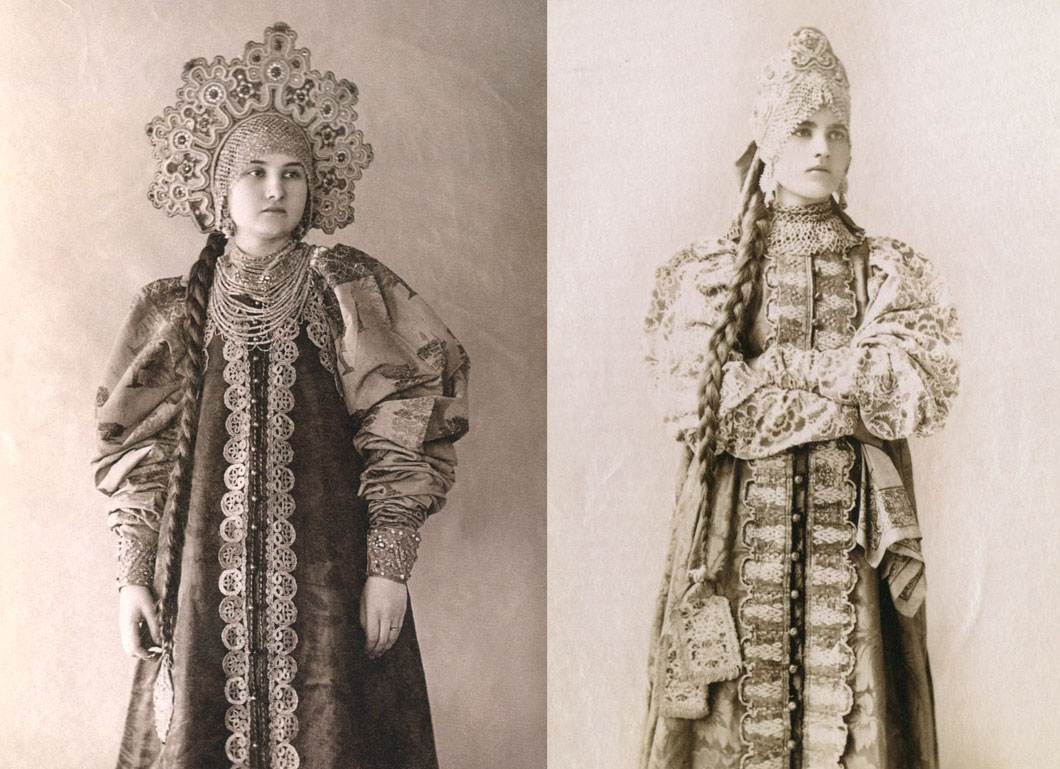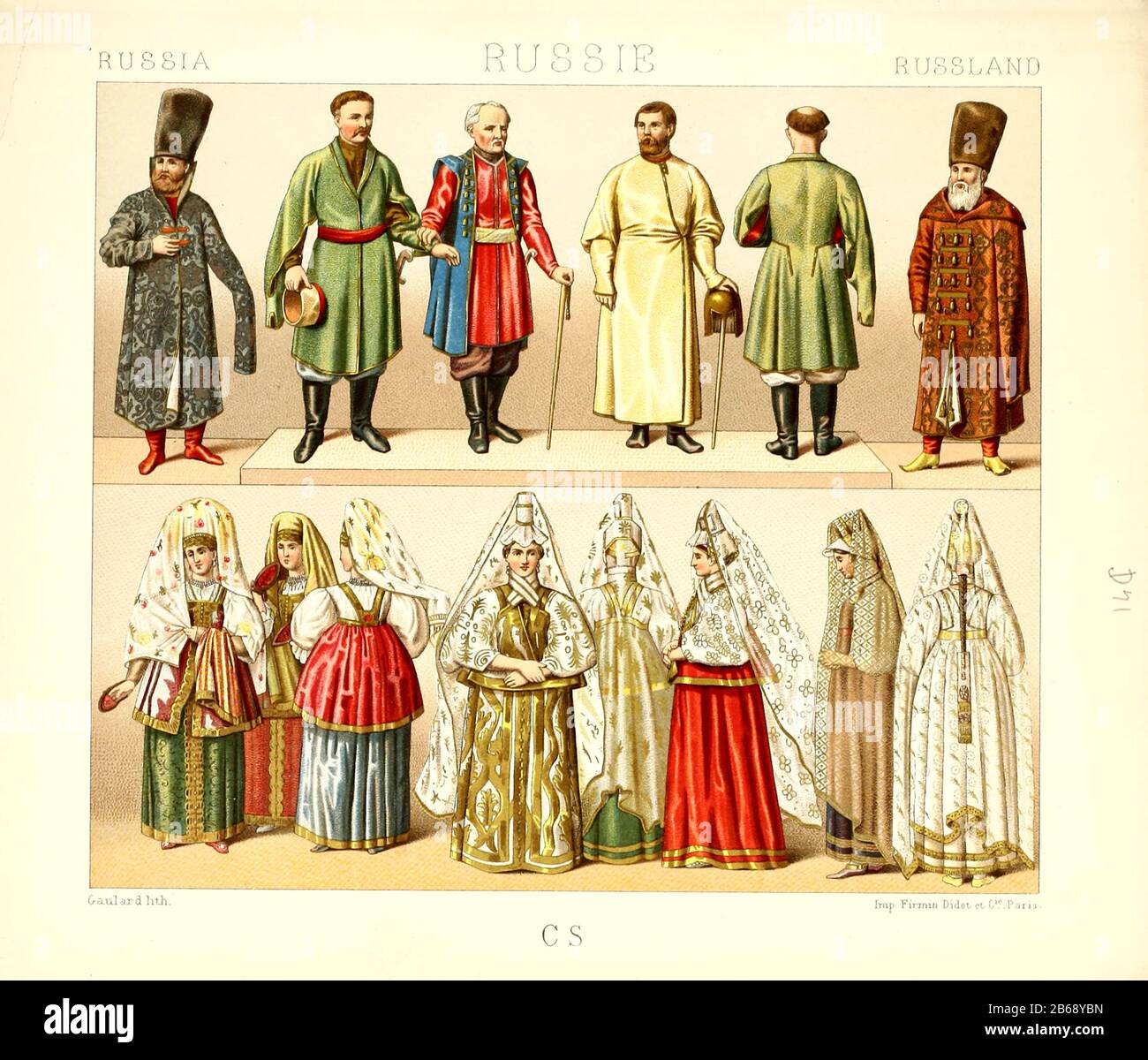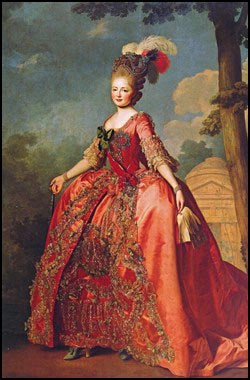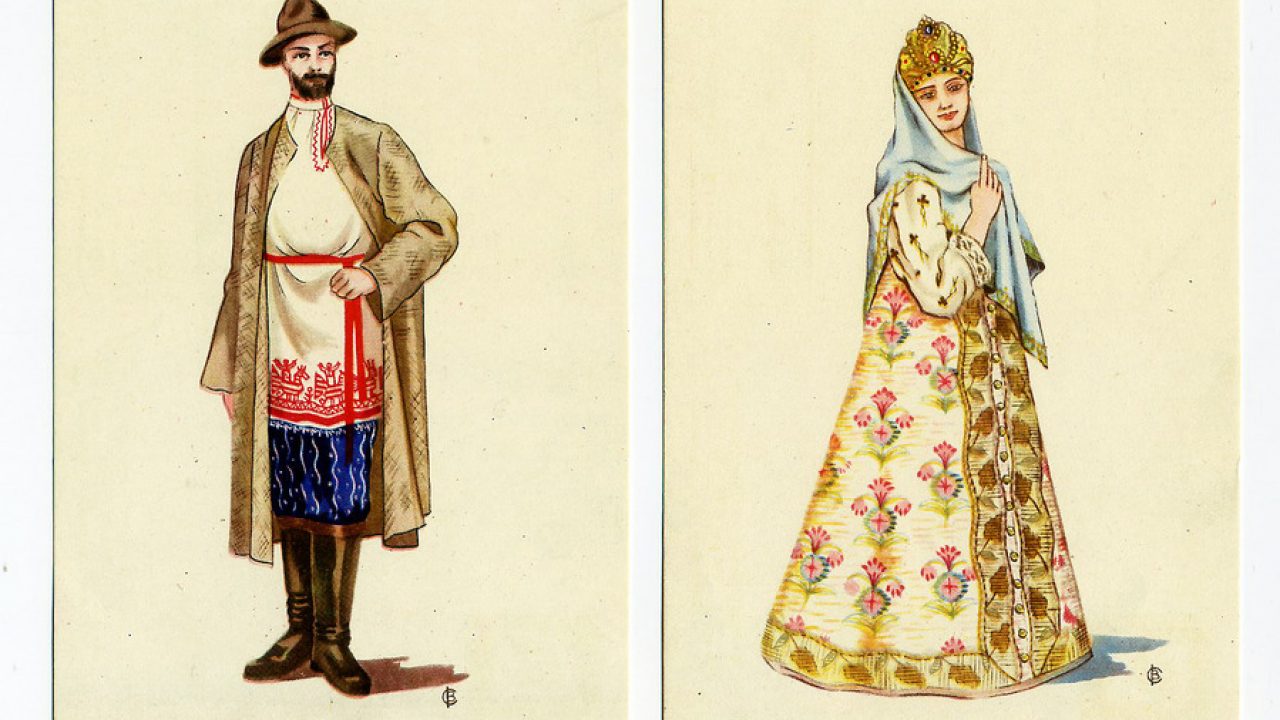National Museum of Women in the Arts 2003 pp. The 18th century became truly earthshaking in the history of Russia.

The Russian Fashion Blog A Brief History Of The Sarafan
The 18th-century Russian court as visualised in The Great a bonkers new satire from Hulu and Channel 4 is a hotbed of moral iniquity vodka and bears.

. The French and English styles of fashion were very different from one another. The nineteenth century opened with a fashion landscape that was changing dramatically and rapidly from the styles of a generation earlier. Russian traditional dress began to develop as a specific form in the 9th century.
The 18th century is famed for its lavish clothing and both the proportions and decoration of dress reached their heights during this period. These 17951820 fashions were quite different from the styles prevalent during most of the 18th century and the rest of the 19th century when womens clothes were generally tight against the torso from the natural waist upwards and heavily full-skirted below often inflated by means of hoop skirts crinolines panniers bustles etc. However his reforms were not always and completely favored because of their radical change from the traditional or because those reforms went.
However more important for the female dress was a type of headdress-the fontange. Until the early 18th century peasants and boyars noblemen wore traditional costumes. Peter the Great made a U-turn for Russia towards the West.
French style was defined by elaborate court dress colourful and rich in. The formative element of the European female dress that had been brought to Russia in the eighteenth century was the corset and it contradicted the Russian ideal of beauty. In 1700 Tsar Peter the Great with his admiration for all things from Western Europe prohibited wearing traditional dress in cities.
In the Russian North in Arkhangelsk and Vologda Provinces it was sewn of silk or brocade decorated with golden lace or fringe. Originally worn by men the Sarafan was a long trapeze-shaped dress that went through modifications throughout the 16th century Single dress piece with shoulder straps and a sleeveless outer-vest This garment could be modified through fabrics and embellishment to make it. However clothing did become more sober towards the end of the century due to the effects of the French Revolution.
It was the time of radical changes caused by Peter I s reforms. Peter Reforms During his reign Peter I initiated reforms of Russian culture that included dress attire for in court and at home. Mar 26 2017 - Explore cctcbcbcs board Russian peasant clothing 18th century on Pinterest.
Breeches were typically made of woven fabric with leather esp. May 26 2018 - Explore Kimberly Winrottes board 18th century Russian Clothing followed by 120 people on Pinterest. For hunting and rarely knit fabric as alternatives.
Although the basic forms remained the samethree-piece suits for men and two-piece gowns for womenthe shapes of these were different. Women Artists from the State Hermitage Museum ed. Russian 18th Century AttireBrandi Cruz.
The French Revolution brought fashions that. See more ideas about russian peasant peasant clothing russian clothing. The formative element of the European female dress that had been brought to Russia in the eighteenth century was the corset and it contradicted the Russian ideal of beauty.
It had no buttons and was tied at the neck with long silk ribbons in a bow. The 1720s marked a distinct change in mens and particularly womens silhouettes from the two preceding decades. In the 18th 19th cc silk or brocade epancha was worn with a shirt of some fine-spun fabrics and a silk sarafan pinafore.
Breeches The standard main lower body garment for men in the 18th century with alternatives being petticoat breeches primarily for sailors and trousers for lower class men but spreading to other groups toward the end of the century. Eighteenth Century Influences on Russian Clothing. Russian 18th Century Attire.
The traditional Russian costume used to be a part of the countrys history up until the beginning of the eighteenth century when Peter the Great proclaimed the Russian dress to be peasant and non progressive. However more important for the female dress was a type of headdressthe fontange. Womens fashion around this time started to.
While other courts moved on changing and adapting the dress of their courts Russia stayed firmly in its Slavic historical mode and so from 1834 until 1917 the unusual ethnic dresses of Russian court ladies became instantly recognizable and a source of pride at home and abroad - Russian women stood out in foreign courts and at home they made a unforgettable. He introduced a law that fined anyone who entered the city in traditional national clothes as well as anyone with a beardThe citizens aristocracy merchants. This turn and its consequences for development of Russia and Russian culture became controversy for scientists and thinkers from the 19th century till.
See more ideas about russian clothing russian fashion folk costume. But like most costume dramas it is also. 1720-1729 18th century decade overview.
Fashion in the years 17501775 in European countries and the colonial Americas was characterised by greater abundance elaboration and intricacy in clothing designs loved by the Rococo artistic trends of the period. 1800-1809 19th century decade overview. Jordana Pomeroy Washington DC.
Lindsey Hughes Women and the Arts at the Russian Court from the 16th to the 18th Century in An Imperial Collection. It was the Russ.
Ensemble Russian The Metropolitan Museum Of Art

Court Dress Of Empress Maria Fyodorovna 1780 S Court Dresses Fashion 18th Century Fashion

Russia History Of Dress Lovetoknow

Dressing 18th Century Russia In The Great Screen Queens

Ancient Russian Fashion And Lifestyle 18th Century From Geschichte Des Kostums In Chronologischer Entwicklung History Of The Costume In Chronological Development By Racinet A Auguste 1825 1893 And Rosenberg Adolf 1850 1906 Volume 5

Russia History Of Dress Lovetoknow


0 comments
Post a Comment